This is the 22nd in a series of posts on the Sony a9. The series starts here.
I set the integration time on the DMM as high as it would go and went in search of the worst-case battery drain conditions. I couldn’t find any mode that cause sustained drains of over an ampere. The worst condition seemed to be 5 fps EFCS shutter. I didn’t try the all-mechanical shutter, although that would have probably been worse, since I thought it unlikely that some one would bang away for long periods of time that way. Even that mode is not sustainable once the buffer fills, since the camera can only write about one uncompressed raw file per second to a 1000x SD card, and twice that many compressed raw files.
I also didn’t try JPEG file formats, although they could have kept the shutter busy at a higher sustained rate, because I can’t imagine using JPEG myself, and there are so many JPEG modes to consider.
One thing that is important to figure out is whether the finder current variations that I showed you in the previous post are additive to the shutter, image-processing, and writing ones. Luckily, they are not. Here’s a demonstration of that:
This is a series of 5 fps exposures. In this and all the other scope traces in this post, the camera was set to write uncompressed raw files. The camera was set to switch between the LCD and the EVF automatically. About a third of the way into the trace above, I blocked the eyepiece with my thumb, forcing the camera to switch to the EVF, which increases the current drawn when the camera is idle. There may be a slight increase in current here, but I couldn’t measure a difference with the DMM.
The worst case current could be over 1 amp if WiFi is turned on. I have not yet measured the WiFi draw.
Now let’s look at some different shutter modes. This next one was shot with the camera set to CH. I was using the Loxia 21mm, which is a manual focus lens. That’s because the shutter wasn’t set fast enough. Note that I shot a ton of uncompressed raw shots and the buffer did not fill.
Ignore the caption above. The camera is actually taking pictures at about 12 fps. Turning the shutter to 1/8000 second and speeding up the time base, we can see that we get 12 fps:
Where’s that 20 fps? setting the camera to compressed raw gets us there, and gets us our worst-case shutter mode:
Let’s take a closer look at the double spike in current:
I’m not sure what’s going on here. There’s something happening that draws a lot of current that takes less than 10 msec (8.33 msec?), and it happens twice. We know that it takes the camera a little over 6 msec to reset and readout the sensor — at 1/8000 second, the readout is only 125 microseconds behind the reset. So the reset/read operation is probably some of the high-current time that we see.
If I turn the shutter mode to CL, I should get 5 fps, and it appears that I do. The average current draw is about the same:
If we set the drive dial to CL with EFCS enabled, we get about two frames a second. So CL doesn’t mean the same thing for ES and EFCS. If we set it to CM, we get about 5 fps:
And, strangely, we get the same speed when the dial is set to CH:
With the camera in single shot shutter drive mode, it can just keep up with the SD card indefinitely. You can see that the wrotes to the card don’t begin immediately after the first shot ends. It apparently takes more power to write the image to the card than it does to read the chip and process it.
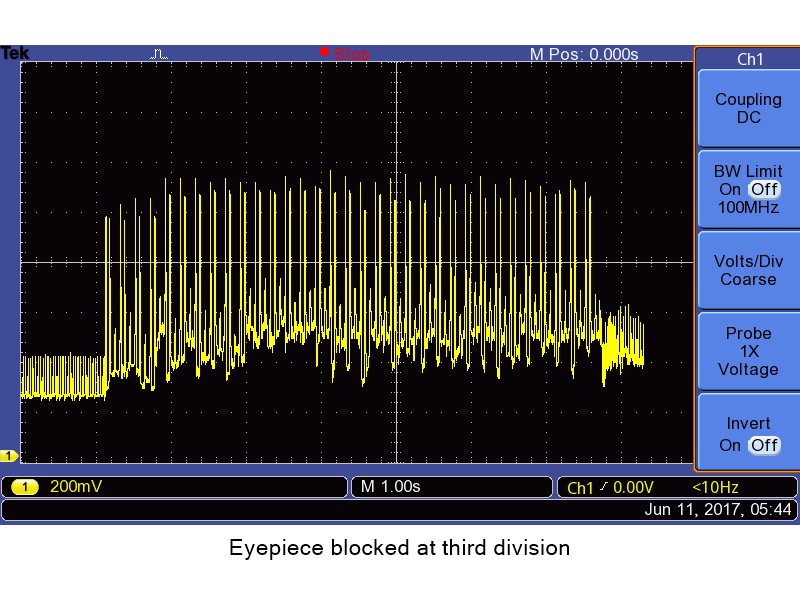

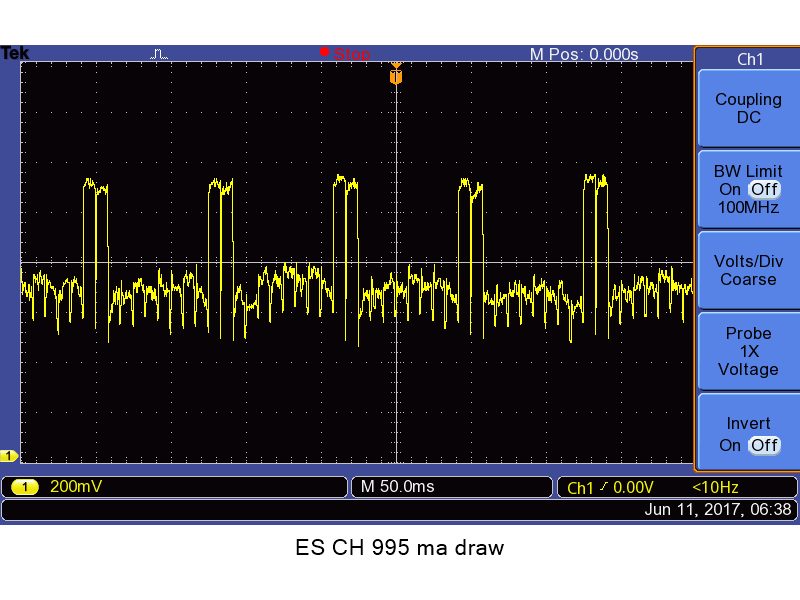
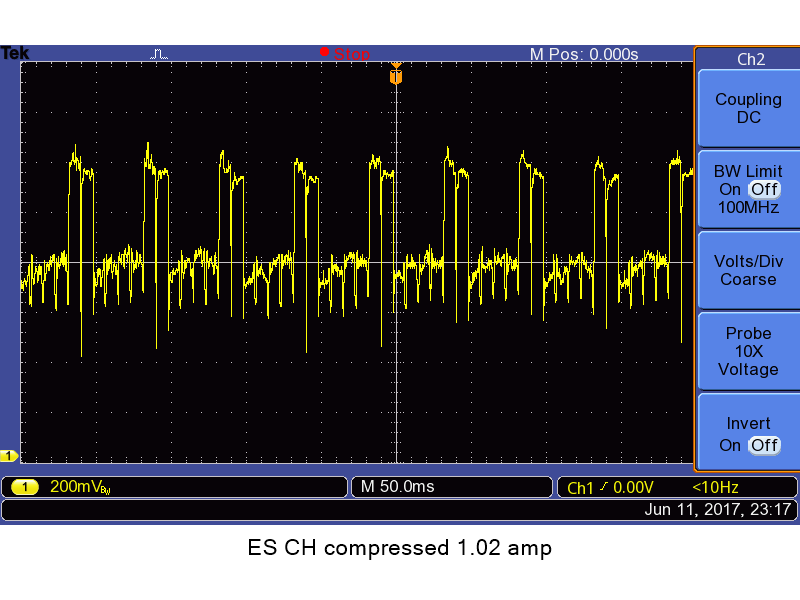
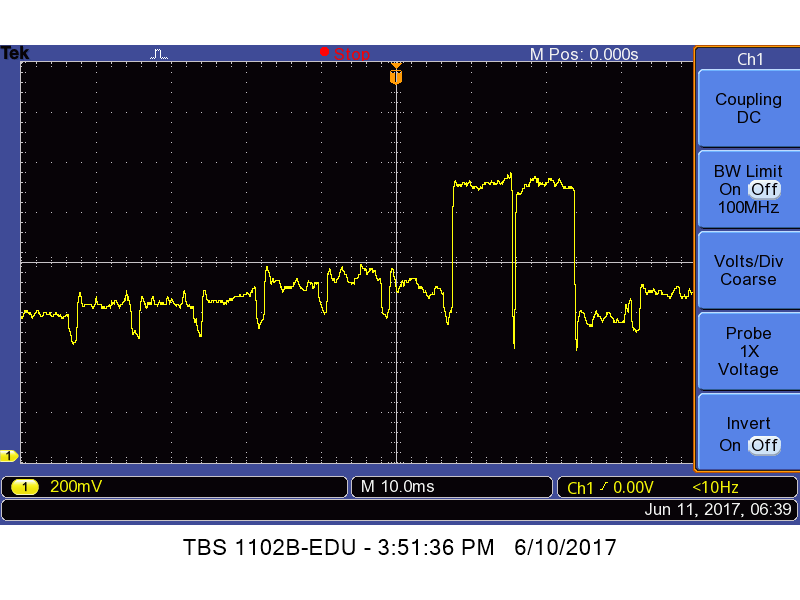
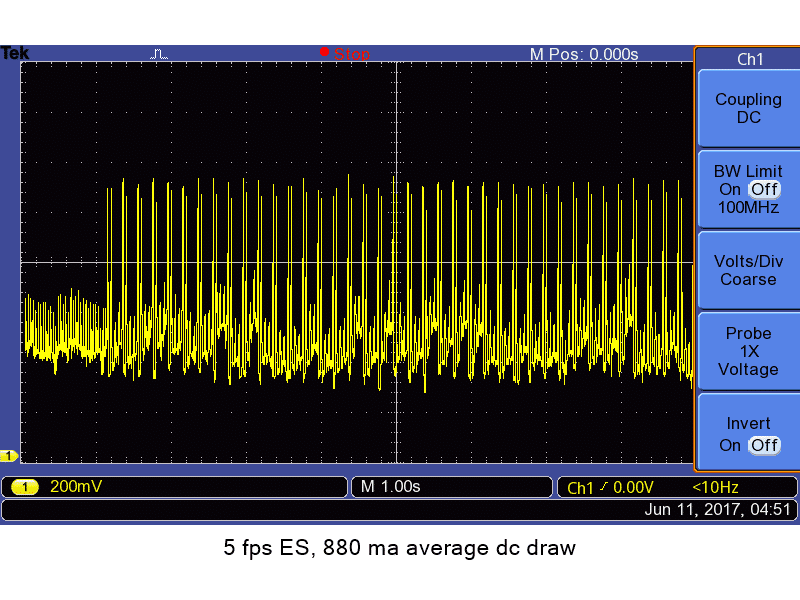

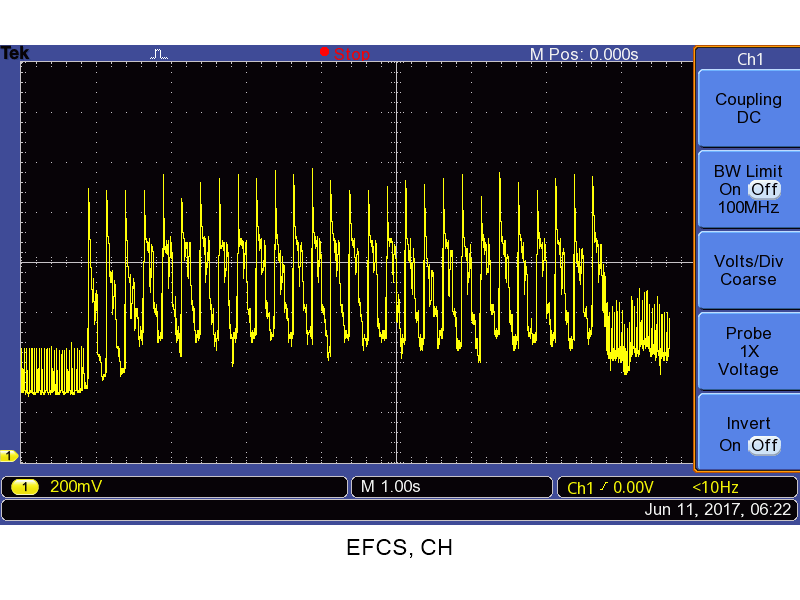
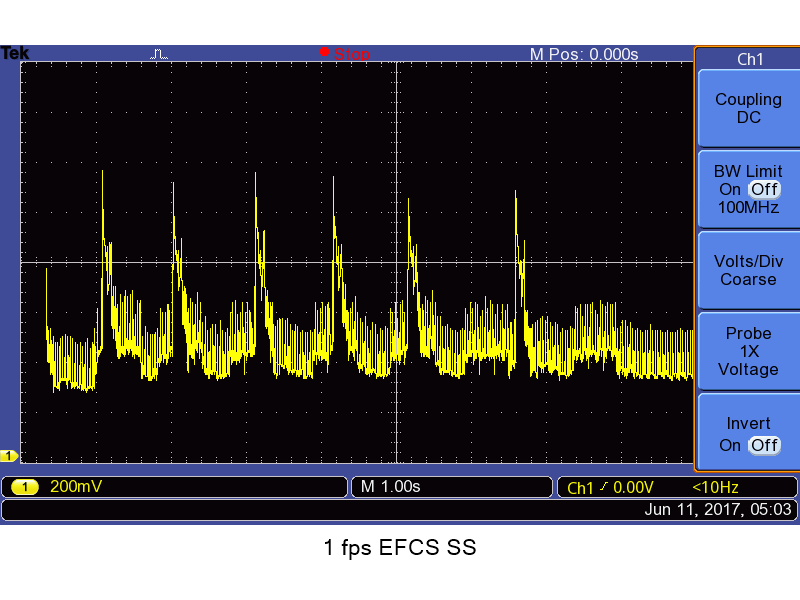
Horshack says
Could the spikes be from the lens driving its aperture? Or some other aspect of the lens operation? Do you see it with no lens attached?
JimK says
That’s a whole lot of current, and it’s an MF lens, so the diaphragm is closed already when the shutter goes off in Setting Effect on mode. And yes, it looks the same in general — although I haven’t looked in detail — with no lens attached. If that much power were going into the lens for any period of time, it would get really hot.
Horshack says
How about IBIS?
JimK says
IBIS is really slow. If you go back a few posts, you can see how it affects current. In the shutter speed posts, I had the camera on a table, so IBIS didn’t have much to do. Of course, it was shut off, but we know that it’s never really off, since there’s no sensor lock.
Horshack says
You’re probably right, although wasn’t that measurement with IBIS enabled rather than disabled/locked down? I suppose the easiest way to disqualify the IBIS mechanism as the source of the spike is to measure a similar Sony body without IBIS, such as the A7r/A7/A7s.
JimK says
http://blog.kasson.com/the-last-word/sony-a7rii-ibis-current-draw-revisited/
Horshack says
Thanks Jim. The horizontal time division of those A7rII traces was wider at 250ms but even at that long duration I can still make what looks like the double-spike akin to the A9’s (each peak appears composed of a pair of spikes, one slightly taller than the other) . As for the amplitude of the A7rII’s spike, the vertical division of the A7rII traces are 2V vs the A9’s 200mV and rough eyeballing shows the amplitude may be similar to the A9’s well.
Since the A7rII’s power spike behavior seems to match the A9’s I think it might still be fruitful to compare against a non-IBIS Sony body to definitively eliminate IBIS as the source of the spike.
JimK says
The vertical axis on the a7RII IBIS trace was 5e-2 v/div, or 50 mv/division, so the spikes that you see there are smaller.
ZM says
Hi Jim, have you considered testing the power consumption in video mode? Could be even worse than 20FPS shooting.
JimK says
I’m just not interested in video with this camera. I’m not much interested in video with any camera.